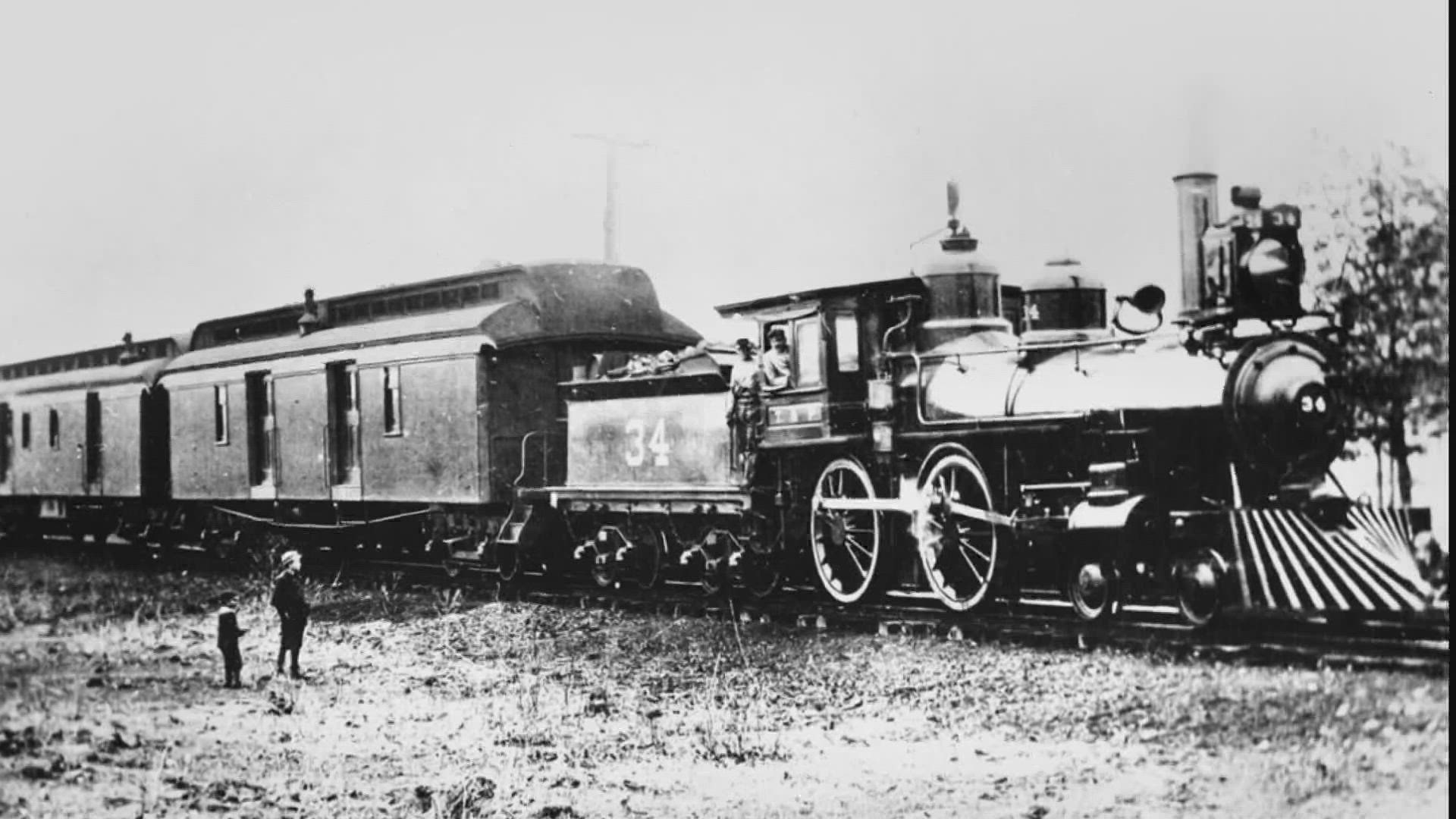DALLAS — On July 16, 1872, something arrived in Dallas that, without it, would have left Dallas a shell of the city it is today. Or maybe not even a city at all.
The first train rolled into town.
The locomotive chugged along the freshly-built tracks of the Houston and Texas Central Railway, which cut through what is now downtown Dallas.
The train arrival marked a major growth period for Dallas; the city's population tripled over the course of a decade, from a small frontier trading post to a bustling market of commerce.
"This single event set Dallas on a growth trajectory like no other city in North Texas," according to the Museum of the American Railroad.
But the growth brought on by the railroad actually started 14 years earlier, on the Texas coast in Galveston, according to several articles by the Texas State Historical Association


Here's how the TSHA recounted the arrival of the railroad in Dallas:
In 1848, Ebenezer Allen, a state official, obtained a charter to build a railway. After several years on hold, the Galveston and Red River Railway company broke ground in Houston in 1853, laying 25 miles of track to Cypress City.
The company was renamed to Houston and Texas Central in 1856 and extended the line to 81 miles to Millican, a small town between Houston and College Station. Then the Civil War put the railroad on pause.
Construction on the Houston and Texas Central didn't pick back up until 1867, and the company continued its stretch northward, reaching Corsicana in 1871.
At this point, Dallas was a young and growing city, but one lacking a spark for major expansion.
John Neely Bryan had founded the city as a frontier trading post. But Dallas lacked a major artery of transportation; the Trinity River wasn't practical as a shipping waterway.
So Dallas officials tried to get a railroad, and they succeeded with the expansion of the Houston and Texas Central.
The railway expanded up from Corsicana to Dallas in 1872 and eventually met with the Missouri, Kansas and Texas Railway from the north, connecting Texas to the nation's rail system.
While Dallas got its first railway in 1872, a just-as-notable arrival happened the next year, when the Texas and Pacific railway connected to Dallas and intersected the Texas and Houston Central. This gave Dallas a rare, at the time, railway crossroads, heading east-west and north-south.
Dallas' population began to boom, growing from around 3,000 in 1870 to 10,000 by 1880.
"As rail lines expanded, this story would play out in countless cities and towns across North Texas," the railroad museum said. "But Dallas would experience the most growth and have the greatest impact as a crossroads of commerce and culture in the region."

